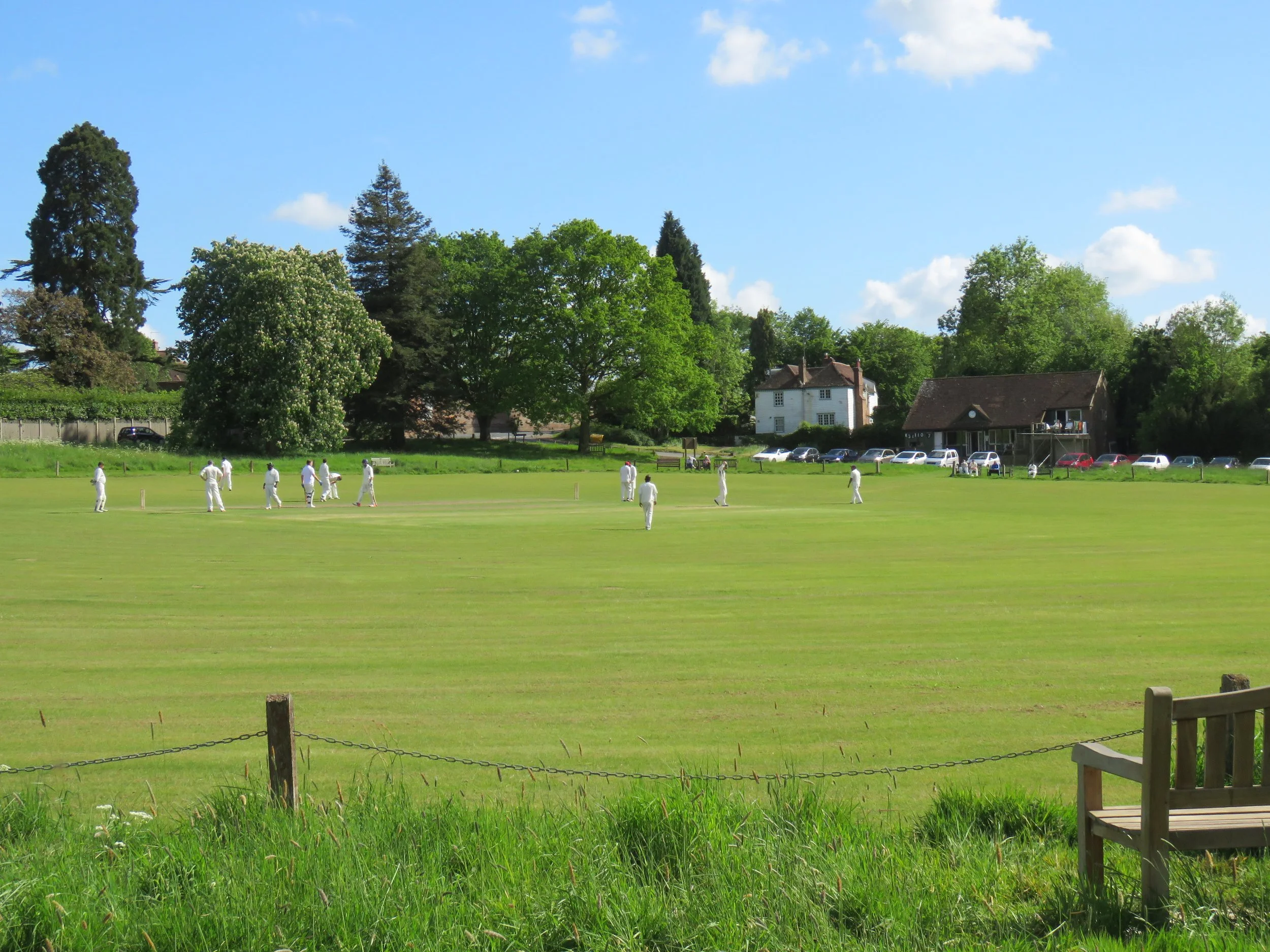
History of Ockley Village
SOME KEY EVENTS IN THE HISTORY OF OCKLEY
Iron Age times
Most people in the Leith Hill area would have lived in small isolated groups. Evidence of early settlements has been found at Abinger and Farley Health. Iron Age forts existed at Anstiebury (near the top of Leith Hill) and on nearby Holmbury Hill.
Roman times
Stane Street (sometimes known as Stone Street) was built by the Romans between Chichester and London to facilitate the movement of troops, food and materials. Much of the modern A29, including the stretch that passes through Ockley, is built on the foundations of the old Roman Road.
Saxon times
Ockley was part of the possessions of Occa who owned a considerable amount of land including the stretch between Ockham (near Woking) and Ockley. The name Ockley is derived from “Occa’s lea” and means ‘Occa’s clearing in the wood’.
In 851 AD, there was a major battle when an army of invading Danes (intent on taking Winchester) met the West Saxons under King Ethelwulf (who had marched up Stane Street to stop them). According to The Anglo-Saxon Chronicle, the Danes were so soundly defeated that none remained to bury their dead. It seems highly likely that this battle took place at Ockley, although not on the village green as legend dictates, but a little further north on the lower slopes of Leith Hill.
11th Century
By the reign of Edward the Confessor, most of the land in the Ockley area was owned by Aylmer (sometimes spelt as Almar or Aelmar). The name persists today in local place names such as ‘Elmers Road’, ‘Elmers Farm’ and ‘Elmers Hill’.
After the Norman conquest, all land was considered the property of the Crown and granted to nobles in return for their support. Much of that previously owned by Aylmer was given to Richard of Tonbridge of the de Clare family.
12th Century
There is some evidence that a small Norman castle was built in Ockley during the turbulent reign of King Stephen (1135-1154), near where St Margaret’s Church now stands.
13th Century
St Margaret’s Church was built at Ockley in about 1291.
14th Century
In 1302, King Edward 1 granted permission for Ockley to hold a market on Tuesdays and 3 Annual Fairs. These took place in the vicinity of the Church and Ockley Court which at that time was the centre of the village. One of these fairs was held on July 20th each year to celebrate the festival of St Margaret of Antioch.
15th Century
In 1450, Eversheds, probably the oldest surviving house in the area, was built.
16th Century
The centre of Ockley village gradually shifted from the area around St Margaret’s Church and Ockley Court area to Stane Street. Many of the houses around the Green date from this time.
17th Century
In 1639, Henry Whitfield, Rector of Ockley, lead a party of 25 families out to the New World and founded Guilford, Connecticut. Modern day descendants of these emigrants still visit Ockley.
1663: Stane Street became a turnpike road and coach travel began to develop.
18th Century
1700: John Evershed, Lord of the Manor, was granted permission to hold a weekly market to be held on Ockley Green
1741: Ockley Workhouse was built
1765: Leith Hill tower was built
19th Century onwards
1802: Ockley Windmill was built (and fell down in 1944).
1841: Following a bequest from Jane Scott, Governess to the Arbuthnot family at Elderslie, a Village School was built at Ockley (still going strong after 160 years). A village well and pump were also installed on the Green.
1867: Railway travel became possible following the opening of Ockley & Capel Station on the Portsmouth line of the London, Brighton and South West railway.
20th Century
1901 The funeral train bearing the body of Queen Victoria passed through Ockley on its way to London. Many people stood on Young’s bridge to watch it pass by.
1914-18: The 1st World War claimed the lives of 29 men from Ockley. John Lee-Steere, only son of the Squire of Ockley, was one of those killed in action. In 1923, Ockley Village Hall was built as a war memorial to him and all the Ockley fallen.
1939-45: Just over 20 years later, the Second World War was another major upheaval in people’s lives and another 11 young men from Ockley died in action. During the War, a number of Canadian troops were billeted in the village. Evacuee children from London were also housed in Ockley.

